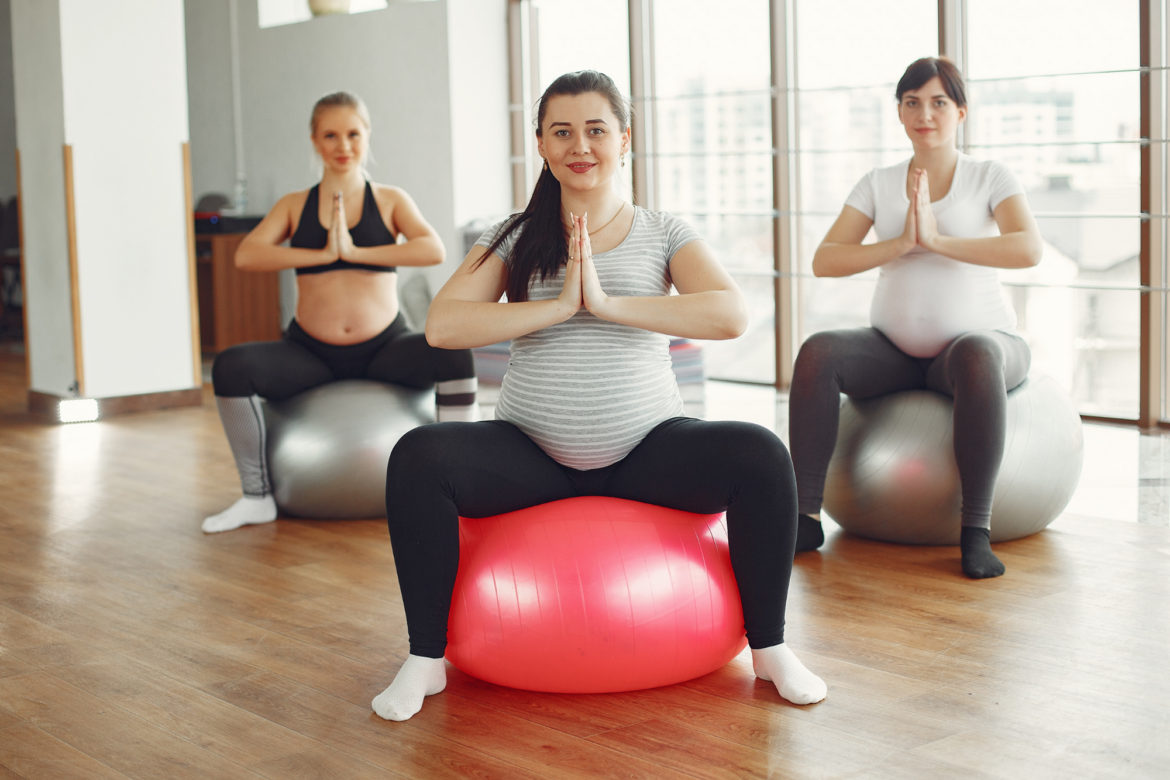Preparing Your Body for the Birth of Your Baby
Most women are familiar with the Kegel exercise or the contraction of the pelvic floor muscles. While these are important in maintaining the health of your pelvic floor, we must not neglect the flip side to that coin, which is teaching those same muscles how to relax. This blog will help prepare your body for the birth of your baby.
Why is this important? Think of it this way if you were to hold a weight in your hand overhead all of your waking hours, you can guess how exhausted and overworked those arm muscles would feel! Sometimes, we so overtrain our pelvic floor with Kegels, that we never let the muscles lengthen and relax in their resting state. Ultimately, if the muscle can’t relax, it won’t be able to contract, which will result in overworked muscles, inefficient function, and possibly pain. Circling back to why this is important, your pelvic floor needs to have to ability to relax while you and your baby are going through the birthing process.
Here are some things you can do to work on relaxing the pelvic floor in preparation for birth. As a general rule, we recommend performing these the last month of pregnancy however if you are working with a pelvic floor therapist, they will determine the best point in time for you to start these exercises. They can be done daily as needed for relaxation. Always consult your OB or physical therapist with questions or concerns. These are generally safe for anyone during pregnancy unless your OB has told you otherwise.
Diaphragmatic breathing
You can do this sitting, comfortably supported with a pillow under your knees. Avoid laying on your back to avoid potential compression of the vena cava. Place one hand on your belly and the other on your chest, feeling for each one rise as you breathe in and fall as you breathe out. Pelvic floor connection: your pelvic floor should relax (feel it melt) as you inhale and gently/reflexively pull up and in as you exhale. Perform 2-3 minutes
Child’s pose
This is a yoga pose that opens the pelvis and inner hip muscles, as well as provides a nice stretch for your spine. A child’s pose may not be an option for everyone depending on other orthopedic issues present. Get into a full sitting-on-knees position with thighs open so that you can bend forward and allow your belly to rest between your thighs. Feel your pelvic floor muscles melt and relax as you breathe. Perform 2-3 minutes or to comfort.
Self-pelvic floor muscle release
This is typically done lying on your side with your knees and hips comfortably bent up. Your top hand reaches around the bottom of your pelvis to the area just to the outside of the vagina. This is your pelvic floor. Gently apply fingertip pressure to the area that runs from the rectum to the vaginal opening, focusing a little extra time on areas that are tender or feel tight. Try to let your muscles melt into your fingertips. You would do the same thing by lying on your other side. 2-3 minutes per side.
Our Women’s Health physical therapists are available to help guide you through your pregnancy should any orthopedic issues arise. Our Women’s Health Therapists can help you prepare your body for the birth of your baby today.

